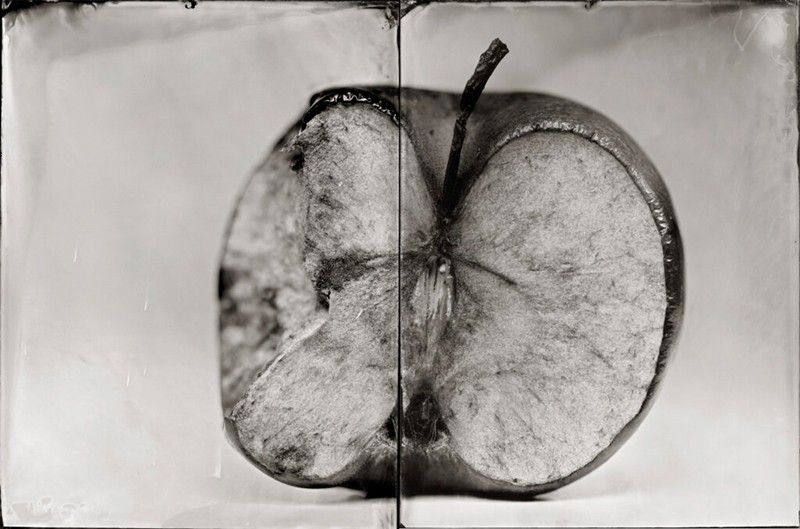Review of photography in ancient and alternative techniques

April 28, 2023 / 6 pm / DOLNA Gallery | / Biuro Wystaw Artystycznych w Kielcach 2 Kapitulna Street, 25-011 Kielce
"Review of photography in ancient and alternative techniques". takes place at the BWA Lower Gallery in Kielce for the third time - and the second time as part of the Photo Festival PHOTOPERYFERIES, of which it is an essential part. This relevance lies in the fulfillment of the formula of this new Kielce Festival, which, by design, penetrates and presents the "periphery - periphery" of the broad current of art photography. It is there that artistic creations created both in old and alternative techniques and those - from the category of contemporary art - in which photography plays the role of one of the essential means of expression are located.
The "Review of Photography in Old and Alternative Techniques" itself - with partial modifications - follows the rules established by the creators of its concept: Janusz Drobisz and Damian Gaszczyk, who previously implemented it in the Silesian galleries of Katowice, Zabrze and Bytom.

Considering the growing number of participants each year - in this year's edition it was 67 people who submitted a total of 303 photographs for the exhibition - these "peripheries" appear as an extremely capacious space. Capacious not only in quantity, but also in quality, as evidenced by the full diversity of both original techniques and individual artistic attitudes.
The collection of 225 works, from which the exhibition was eventually formed, includes all the main subjects touched by photography: from landscape, including urban landscape, through portraits, nudes, still lifes to compositions of a symbolic and abstract nature. The creators of photography in the "old techniques" naturally abandon the often dynamic and full of details document and subjects, the essence of which is vivid color - that is, those that work best realized on typical photographic papers, which provide guarantees of sharpness and precision. This is because their main goal is to take advantage of the special artistic effects offered by the specifics of the chosen technique, often additionally burdened with a large dose of randomness.
The unpredictability - but also the uniqueness - of successive prints largely accounts for their value and uniqueness. This also makes the work on each photo a kind of adventurous journey, in which the seemingly tame path often surprises and opens up to new spaces. The saying that "travel educates" is also true here; in-depth knowledge of chemical reagents, forms and exposure times, paper grades, filters and other technological subtleties comes with experience and learning from one's own mistakes... Certainly this kind of photography and photo development teaches patience, which is extremely important in the arduous process of dealing with resistant - and often literally toxic - chemical matter.

It seems that one of the reasons for the apparent renaissance in the popularity of old photographic techniques is, in a way, the "shading" of photography into digital techniques. Similar tendencies - and resulting from a similar reason - are also noticeable in artistic graphics. The artist's dialogue with matter, the construction of an image: photographic, graphic or any other, by way of a compromise between its limited physicality and the author's ideological conception, the creative opening to the actions of chance, is an extremely fascinating process. It is a process that leads every artist to self-discovery, to delve into his own subconscious - and to enrich his consciousness with the unique knowledge he needs; including that of himself. Formal and content diversity, artistic attractiveness, originality, as well as distinct individual characteristics of each of the works collected at the Review, testify that their creators have definitely achieved both this knowledge and deep artistic awareness.
Stanisława Zacharko-Łagowska - curator





Exhibition participants:
Małgorzata Bilicka, Zuzanna Borucka, Monika Cichoszewska, Piotr Duszejko, Joanna Fedorowicz, Adam Fleks, Mariusz Gajewski, Damian Ganszczyk, Łukasz Gietka, Arkadiusz Golosz, Anna Grabowska, Tomasz Grzyb, Sylwester Hawrył, Mariusz Hertmann, Krzysztof Jan Heyke, Monika Jarecka,
Justyna Anna Jasica, Katarzyna Kalua Krynska, Marzena Kolarz, Jacek M. Kozłowski, Przemysław Kruk, Remigiusz Krzyk, Piotr Kucharczyk, Zuzanna Kulesa, Piotr Langman, Ewa Laskowska, Katarzyna Łata, Izabela Maciusowicz, Monika Michalczewska, Mirosław Miranowicz, Michał Moroz, Andrzej Najder, Katarzyna Navarra, Izabella Niemira, Mirosław Niesyto, Małgorzata Nowak, Piotr Olszowski, Alina Ostrowska, Greg Ostrowski, Wojciech Paciura, Maciej Pastuszka, Katarzyna Pietka, Dominika Popiołek, Mirosław Radomski, Paweł Roman, Kamila Rosińska, Katarzyna Rybczyńska, Małgorzata Sajkiewicz - Kręt, Monika Sobczak, Janusz Sochacki, Dariusz Stefaniak, Agnieszka Stefańska, Krzysztof Strzoda, Tomasz Susuł, Iwona Suszycka, Piotr Szudra, Lech Szymanowski, Paweł Tomczyk, Marek Wesołowski , Piotr Wiktor Węcławski, Andrzej Wiktor, Barbara Wilk, Tomasz Wójcicki, Ksawery Wróbel, Anna Wróblewska, Paweł Żemełko.
